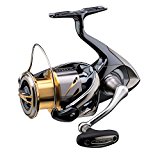Fishing Bait Tips
- When fishing with live bait fish like minnows, consider using oxygen tablets especially if you’ll be gone for some time. While bait fish will work if dead, live bait fish does a better job of getting a fish’s attention and landing a good lunker.
- Bass love live bait and can be best caught with crayfish and worms. However, the following baits are also recommended bass table fair: golden shiner, fathead minnow, bluntnose minnows, creek chud, gizzard shad, sucker, dace and madtom.
- Healthy minnows swim together and towards the bottom of the tank while healthy worms are kept in cool to warm conditions. If keeping them for some time, feed them with margarine, coffee grounds, lettuce and room temperature conditions.
- When a major or sustained rainstorm is about to arrive, take sheets of Styrofoam and place them on the ground with rocks on the corners to hold it down. Once rain has stopped, pick it up the Styrofoam and harvest the worms.
- The best worm to use for catching bass is the ever present and popular night crawler between 7 inches and 10 inches. These are readily purchased or can be caught on warm, moist summer nights as they crawl the ground.
- Worms can be kept fresh in a number of ways. Fill a simple 39-ounce coffee tin with newspaper to a few inches from the top. You should be able to place 40 worms in there and they’ll keep well for several weeks when placed in a fridge.
- Many use grasshoppers and crickets for fishing and some use them for catching bass. However these will prove ineffective when catching bass. The best live bait for catching bass are minnows, crayfish and worms: both plastic and live worms.
- Frogs are excellent bait used for catching largemouth bass, but only live frogs are worth the effort. Most plastic frogs have the hook placed in a way that make it very difficult for you to catch a bass with them. Tadpoles also work well.
- Salamanders are excellent at catching largemouth bass. While there are many salamander varieties, consider mole, giant and dog as the most popular at catching largemouth. Salamanders also store for a long time with little care required.
- Leeches are easily kept for long periods of time. As many as a pound can be kept in a container that is 12 inches square with fresh water and kept in the fridge. Clean the container every week. They don’t need food and keep the fridge around 45F.
- To avoid touching a leech, place a rock in the bottom of the container. Lift the rock and apply the hook to the underside of the leech right behind the sucker. If you get a leech stuck on you, it can be removed with beer or rubbing garlic on it.
- Wax worms, goldenrod grubs, meal worms, maggots, insects and wood borers along with worms and crayfish are used to catch bass and many other popular freshwater game fish. However, night crawlers and plastic worms work well and are easy to catch.
- Crayfish are a cornerstone of any smallmouth or largemouth bass’ diet. They can be found at any bait store or can be caught using simple traps, also found at a bait store. There are also many lures with different color patterns that also work well.
- To catch crayfish, place a net in the water behind it so they can’t get away as they can swim fast. Once you have them, keep them by storing them in a container like a standard sized bucket with grass and aquatic leaves.
- Catching night crawlers is an exercise in stealth. While they appear slow out of the hole, while partly in, they can retreat very fast. Walk slowly and softly and use a low light flashlight. Grab them with your thumb and index finger and pull slowly.
If you have a tip you’d like to share, please send it to us.


